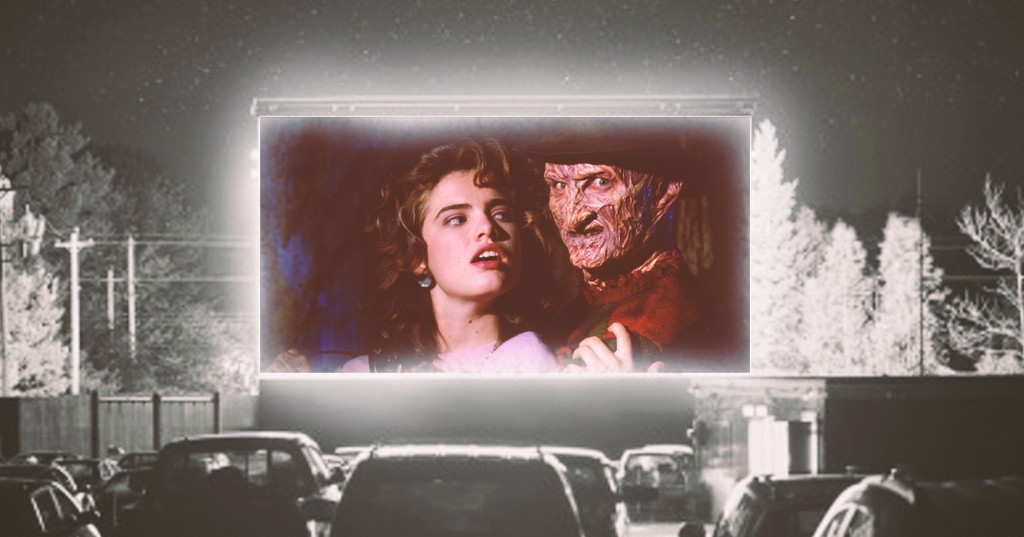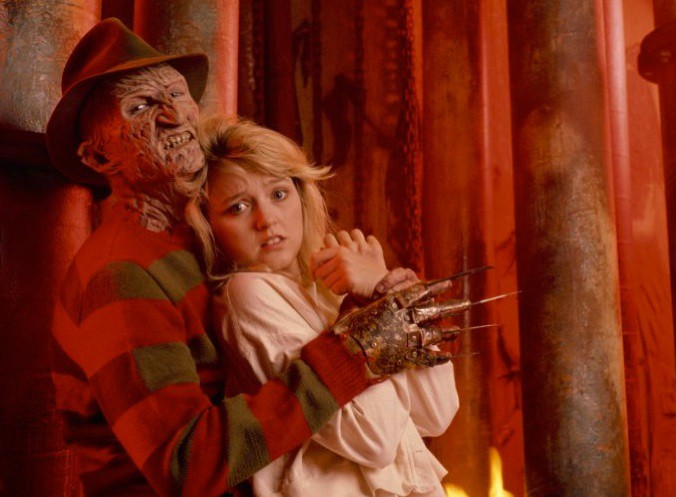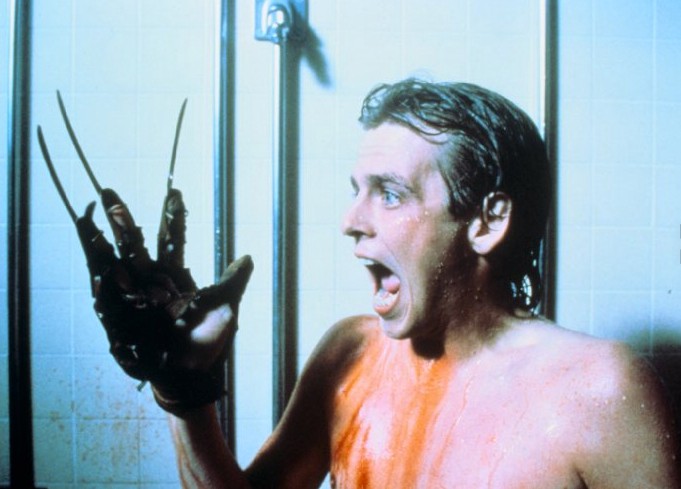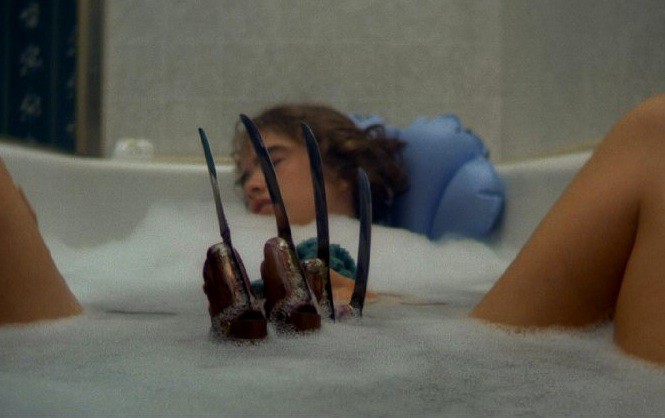Could Freddy Krueger Really Kill You Through Your Dreams?

A biological exploration of things that go bump in the night—with deadly consequences.
Our Movie Mythbusters series answers the age-old question, “Okay, but could that actually happen in real life?”
In real life, no one having a bad dream about about a bladed-glove-wearing psychopath wakes up bleeding from razor cuts, like Freddy Krueger’s teen victims do in “A Nightmare on Elm Street.” There are no such thing as Dream Demons: the floating, snakelike creatures who give Freddy the power to erode the boundary between dreams and reality.
Even if a real-life Krueger could invade our nightmares, he wouldn’t be able to kill us there. Just like when we dream of doing a job interview naked or making out with our high school crush, who is also somehow Peter Falk, dreams are weird while they last, but totally over once we wake up.
Or are they?
The mind has a lot of power over the body. That’s why there’s such a thing as the placebo effect. Perhaps by appearing in victims’ darkest nightmares, Freddy could exploit that mind-body connection to wreak all sorts of real-world havoc.
Below are three possible tactics our real-life Freddy could use to kill people in their dreams.
They’re ranked in order of potential deadliness—and how much Freddy would enjoy them.
1. Triggering a heart attack
In the 1959 “Twilight Zone” episode “Perchance to Dream,” a man with a serious heart problem keeps having nightmares about a beautiful carnival dancer, Maya, who tempts him onto pulse-pounding thrill rides. He wakes up from each dream with his heart racing, knowing he just narrowly escaped having a heart attack. Could a real-life Freddy Krueger steal a page from Maya’s book?
The short answer is: Yes, he could—if the victim was already at risk for a heart attack due to factors like high blood pressure, sleep apnea, diabetes or smoking. Heart attacks are more common in the early morning, when the body releases stress hormones according to its internal clock. Since rapid eye movement (REM) sleep cycles also lengthen in the morning, nightmares are more common then, too—and the combination can be deadly, even without a disfigured serial killer invading your dreams.

However, the heart attack tactic probably wouldn’t work on the healthy teens of Elm Street. There are some case reports of people with no previous symptoms of coronary disease having heart attacks after nightmares; however, physicians agree this is quite rare. “Healthy people’s hearts are usually more than able to handle the stress of even the most frightening dream,” Dr. Robert Aronson, a sleep medicine specialist, told the Chicago Tribune.
The post-nightmare heart attack has the advantage of looking like a natural death—perfect cover for the beginning of a killing spree, before the protagonist has caught on to your existence. But assuming our real-life Freddy doesn’t want to limit his murderous frenzy to diabetics and smokers, he would need to supplement with other killing techniques eventually. Not to mention that, compared to dissolving people into fountains of blood or using their tendons as marionette strings, giving people heart attacks is just plain boring.
Deadliness rating: ??
2. Homicidal sleepwalking
Sleepwalking is probably the most common way for an otherwise healthy person to die or get seriously injured in their sleep. Sleepwalkers have been hit by cars after walking into traffic, frozen to death after wandering outside in the winter and broken their necks jumping out of bed.
Comedian Mike Birbiglia once jumped out of a closed second-story window while sleepwalking; the shattered glass nearly severed his femoral artery, which would have killed him.
On the scale of horror movie deaths, though, jumping out a window is pretty prosaic. More frighteningly, sleepwalkers can in rare cases actually kill other people without even being conscious of it. About 68 cases of so-called homicidal sleepwalking have been reported up to 2005. In many cases, the sleepwalkers believed they were attacking an intruder, when they were really hurting a family member or friend.

Freddy has shown he’s perfectly capable of manipulating people into doing his killing for him. In “A Nightmare on Elm Street 2: Freddy’s Revenge,” he possesses the body of Jesse Walsh to murder Jesse’s teacher and one of his friends. No doubt our real-life Freddy would savor the irony of his victims fighting him in their dreams, only to wake up and discover that they’ve sleep-killed a loved one instead.
However, only 4% of American adults sleepwalk, according to NBC News. So Freddy would have to increase his victims’ chances of somnambulism by making them stressed out, anxious and overtired—all risk factors for sleepwalking, and conveniently also common effects of having recurring nightmares!
Freddy could also simply wait until some well-intentioned nurse inevitably tries to cram sleeping pills down his victim’s throat, as happens in nearly every “A Nightmare on Elm Street” movie. Medications like Ambien are known to induce sleepwalking in at least some instances.
Just like heart attacks, though, murder-by-sleepwalker might be too indirect to fully satisfy Freddy long-term. As we learned in “Freddy vs. Jason,” he gets very touchy about other people “stealing” his victims. It seems likely that after a few murders by proxy, he’d be jonesing to do some killing of his own again.
Deadliness rating: ???
3. Sudden Unexpected Nocturnal Death Syndrome (SUNDS)
To understand how a real-life Freddy would most likely kill through dreams, we have to go back in time to a series of incidents that Craven himself said were inspirations for the original “A Nightmare on Elm Street” movie.
In the early 1980s, 116 healthy men and one woman—all Hmong immigrants from Laos—died suddenly and inexplicably in their sleep. Some of the victims complained of having terrible nightmares in the days or weeks before they died, and relatives reported hearing some of them moan and gasp in their sleep. The victims lived all across the United States, and had no ties to each other except a shared culture and ethnicity. Their median age was 33. Experts dubbed the condition that killed them Sudden Unexpected Nocturnal Death Syndrome (SUNDS), but admitted they didn’t really know what had killed the Hmong. The story fascinated Craven, who read about it in a series of articles published in the LA Times.
For the latest attempt to explain deaths by SUNDS, we turn to University of California San Francisco professor Shelley Adler. In her 2011 book “Sleep Paralysis: Night-mares, Nocebos, and the Mind-Body Connection,” Adler makes the startling argument that SUNDS might actually have been triggered by dreams—or more specifically, sleep paralysis.

A relatively common and usually harmless condition, sleep paralysis happens when the brain mechanism that keeps you from physically acting out your dreams fails to turn off when you become conscious. Sufferers wake up in bed unable to move, which is scary enough in itself. But they also often hallucinate evil presences standing over their beds or even sitting on their chests, trying to crush the breath out of their bodies. The visions are so convincing that many sufferers continue to believe they’ve seen a real demon or monster, even after they wake up. (For an amazing documentary about sleep paralysis, check out “The Nightmare” on Netflix.) Among the Hmong, these hallucinations are known as tsog tsuam, and believed to be punishments for not worshipping properly or honoring their ancestors.
Most people have heard of the placebo effect. If a patient believes strongly in a fake medical treatment, that treatment may actually relieve his symptoms, just as if he’d taken real medicine. But Adler points out that there’s a flip side to this. If it’s possible for us to think ourselves well, it’s equally possible for us to think ourselves sick—the so-called nocebo effect. Adler theorizes that Hmong men who believed they were being visited by a wrathful tsog tsuam may have more or less thought themselves to death.
If this kind of death were possible, it would be good news for our real-life Freddy Krueger. Sure, those of us who think of Freddy as fictional are probably safe from SUNDS. But what if you knew someone who had a heart attack during a nightmare about Freddy? Or someone who killed their family member while sleep-fighting Freddy in a dream? How long would it be until you started to fear Freddy’s power yourself?
Psychological phenomena can be just as contagious as physical disease — just look at suicide clusters or cases of mass hysteria like the Salem witch trials. Just like in the “A Nightmare on Elm Street” movies, the more people who believed in Freddy, the more his power increase.
Deadliness rating: ?????
